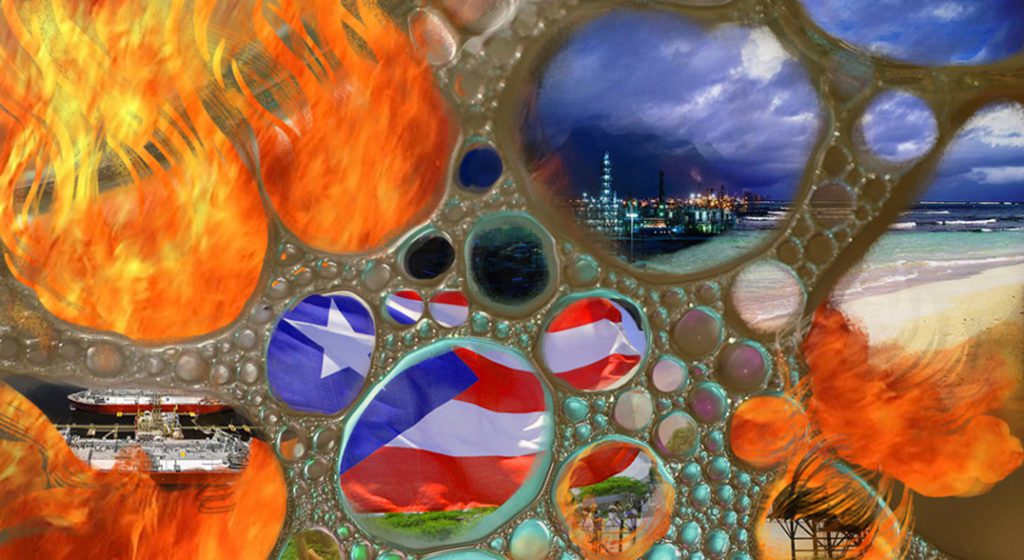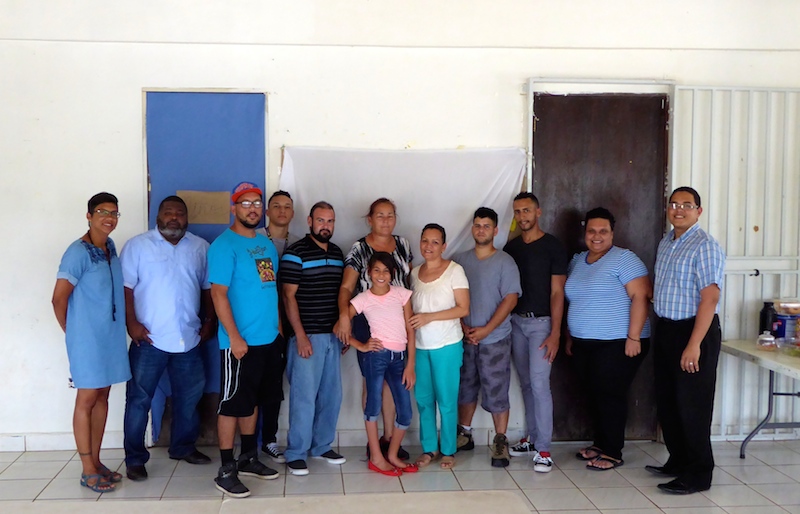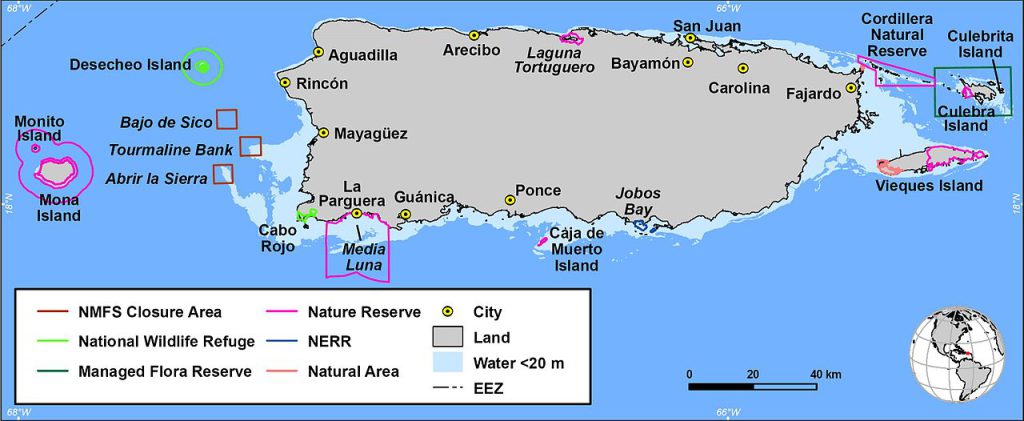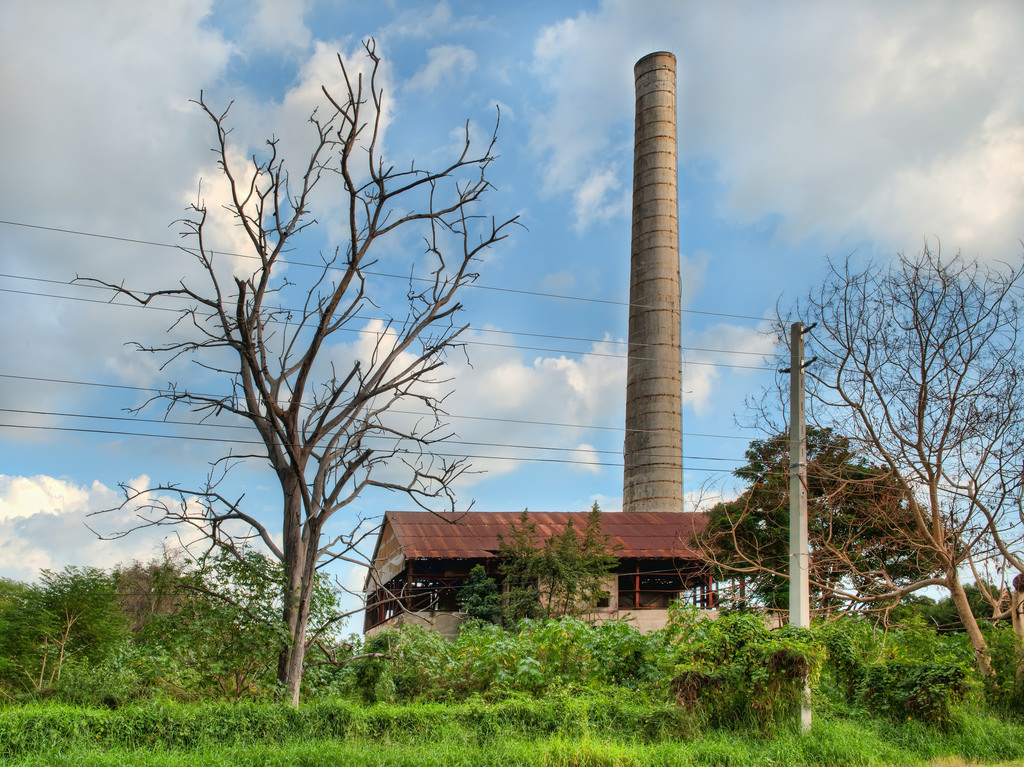The Making of a Community Activist

The first time I met environmental lawyer Ruth “Tata” Santiago in July 2016, she was carrying trays of food into a community center to feed resident volunteers who had come together to participate in a one-week workshop on solar energy that she had co-organized. I attended the workshop to conduct participant observation and interviews for my ongoing ethnographic project about community responses to environmental injustice.
The next time Tata and I met some weeks later, it was at a week-long environmental youth camp, Convivencia Ambiental, that she started and has run on a shoestring budget for the last 10 summers. Up to 60 youth at a time participate in the camp. Since then, I have seen her testifying in public hearings against the deposit of toxic coal ash in island landfills; presenting her work at an environmental justice conference; filing appeals to the courts; co-writing grant proposals to fund community initiatives; participating in local community meetings and events; and fielding interviews from the local and national press, as well from academics, documentarians, and policy advocates.
Tata lives on Puerto Rico’s southeast coast, an area where the pristine Caribbean beaches and verdant coastal forests are threatened by industry. Directly south of Puerto Rico’s capital of San Juan, the picture-postcard Caribbean Sea and sparkling Jobos Bay provide the setting for two mammoth power plants. On the Guayama side of the bay stands the Applied Energy Services Corporation’s (AES) coal plant. On the Salinas side, in the historic Central Aguirre neighborhood, is the Aguirre Station, which is owned by the Puerto Rico Electric Power Authority. The latter is planning a conversion from oil and diesel to natural gas.
Part of that conversion is a proposed project known as the Aguirre Offshore GasPort, which is a joint private-public venture between the Puerto Rico Electric Power Authority and Excelerate Energy, a private company based in Texas. If constructed, Excelerate’s floating offshore liquefied natural gas (LNG) regasification facility will provide fuel to the power plant. Although that fuel may be cleaner to burn, it will require the construction of a pipeline through Jobos Bay to the mainland, threatening both the wildlife in those waters and the livelihoods of poor community members who rely on the ocean for food, work, and recreation. Environmental groups, Tata, and many local residents have been opposed to the plan since they first learned of its full implications.
The Aguirre Offshore GasPort project is just the latest example in a long string of environmental injustices in Puerto Rico. The disenfranchised people of this region, including Tata’s ancestors (and mine), have long been victim to collapsing industries, economic hardship, and ecological destruction. The economic benefits of the proposed project—in terms of the creation of jobs for local residents—are negligible and do not offset the potentially catastrophic environmental impacts of the LNG pipeline on the bay. But there is perhaps one encouraging thread in this larger story. As both a native of Puerto Rico’s southeast and an anthropologist, I have seen that the local people do not believe that solutions will come from above. That is why they are predisposed to grassroots activism—to the kinds of community organizing led by extraordinary people such as Tata.
Tata was born in 1959 to Puerto Rican migrant parents stateside. She grew up in New York City’s South Bronx and in a Pennsylvanian community of agricultural and factory workers—Puerto Rican economic migrants like her parents and their friends. Life was very hard indeed. Yet poverty and economic hardship were much more widespread in Puerto Rico.
Tata and her family returned to live in Arroyo, Puerto Rico, a seaside town east of the Jobos Bay, historically populated by fishers and sugar cane workers, just in time for her to begin the seventh grade. In their neighborhood, roads were unpaved and people lived in extremely modest homes. The schools lacked books—and seats. Classrooms were crowded with children who sometimes had substitute teachers or no teachers at all for weeks or months at a time. (During times when teachers did not show up, some students spent their time unsupervised on the school grounds, some spent the day loitering around town, and others simply went home.)
Although Tata’s Spanish was initially not very good, she was almost fluent by the end of her first year in Arroyo. The local public school received a steady stream of children born to migrant parents, so it had created a small bilingual program. “I [also] relied on elders, like my sister-in-law … and my grandmother, Dolores Merced, who told me stories about my ancestors and about what life was like when she was a child,” she recalls.
By the time Tata started the eighth grade, her family had secured an apartment in a brand-new low-income housing community in the nearby town of Salinas. Tata remembers this as the year she became an activist. In Salinas, she met a group of young people, one of whom was the esteemed community activist and cultural worker Nelson Santos, who were organizing students and community residents to improve the conditions of the local schools. Throughout high school, Tata worked with fellow students to arrange support for teachers in their demands for better working conditions.
Due to her family’s dire economic situation, after graduating from high school Tata moved stateside to attend college; she won a scholarship to attend Lehigh University in Pennsylvania. After earning her bachelor’s degree, she went on to Columbia University’s law school. Throughout, she was active in advocating for students of color and tenants’ rights.
After graduation, she worked for a law firm on New York City’s Park Avenue. But on a vacation to Puerto Rico in 1986, Tata was moved again by the appalling conditions in the southeast. Her time and energy, she realized, could be better spent working to improve life for the poor and marginalized in her own home region.
Tata moved back to Puerto Rico in 1987 and took a job with a law firm. Over the following decade, she became deeply involved with community activism. Along with activist Nelson Santos and other community residents, Tata organized community events, wrote articles for a community newspaper, and helped organize a committee to help the children in the public housing project where she grew up. She and other residents restored a historic theater building, where they began showing films and hosting music and dance performances. She worked with community activists to plan alternative development projects focusing on ecotourism and sustainable agriculture, and she helped create an adult education and training school that offered English language, cooking, sewing, ceramics, and furniture-making classes.
Since 1997, Tata has been an environmental lawyer for Comité Diálogo Ambiental, Inc. (Environmental Dialogue, Inc.), an environmental advocacy organization founded that same year by Víctor Alvarado Guzmán, a local community activist. Tata and Environmental Dialogue fought and won—alongside wealthy agribusiness interests in the region—an important environmental case in 1998, defeating Browning Ferris Industries’ proposal to build Puerto Rico’s largest landfill in Salinas. One of the lawyers from their private sector allies called Tata their “secret weapon”: “He meant that the judge would be surprised when a petite black woman who is both a community resident and a lawyer argued the case,” says Tata.
At the time, Environmental Dialogue and South Against Pollution, another local community organization, believed that the proposal to build the landfill was related to AES’s plans to build a coal-fired power plant in neighboring Guayama; community members and local environmental organizations supposed that the coal ash produced at the AES power plant would be disposed of in the new landfill. Although Environmental Dialogue and its private business allies successfully defeated the building of the landfill, the AES power plant was constructed. For over a decade, Environmental Dialogue has been at the frontlines of the fight against the inadequate disposal of the plant’s toxic coal ash, which has been used as fill material at construction sites and deposited in island landfills.
Environmental Dialogue is once again at the forefront of a significant environmental case in its efforts to oppose the Aguirre Offshore GasPort. The U.S. Federal Energy Regulatory Commission (FERC) prepared the final environmental impact statement for the project in 2015. (As a U.S. territory since 1898 and a commonwealth since 1952, Puerto Rico is protected under U.S. federal environmental laws and guidelines.) The statement concluded that “construction and operation of the project would result in mostly temporary and short-term environmental impacts.” The project was given a green light. But local residents and environmental advocates protested, and in 2016, Environmental Dialogue, with Tata as part of the team of attorneys, filed a challenge to FERC’s ruling in the U.S. Court of Appeals for the District of Columbia Circuit.
Even 30-plus years ago, the environmental and social significance of Jobos Bay was recognized—at that time by the National Oceanic and Atmospheric Administration (NOAA) when it designated 2,883 acres of the estuary to be part of its network of sanctuaries. The Jobos Bay National Estuarine Research Reserve strives to protect its mangroves and sea grasses, as well as the endangered brown pelican, peregrine falcon, hawksbill sea turtle, and West Indian manatee. The reserve status protects parts of the Jobos estuary for long-term research, water-quality monitoring, education, and coastal stewardship.
If construction of the Aguirre Offshore GasPort goes ahead as planned, part of its pipeline will run through the reserve. Aside from the dangers of pipeline leakages and breaks, the facility would be lit 24 hours per day, acting as a source of light pollution that could affect wildlife such as sea turtles. The construction of the pipeline would disturb sensitive habitats and water circulation patterns, and pose a navigational hazard to local fishers by constraining the routes they can take to traverse the treacherous keys and reefs between the bay and open ocean. Many of these potential problems exist because local people have been excluded from the planning process, which has been the case for a long time. As Tata told me one day as we talked during a dinner prepared by the youth at the Convivencia Ambiental camp, “The development of Salinas has historically been determined from outside its borders—by people who not only were not residents but also barely knew anything about its unique natural resources.”
In November 2016, Tata and Environmental Dialogue, in collaboration with another environmental group called Enlace Latino de Acción Climatica (Latino Climate Action Network), submitted the last of a series of filings against the GasPort’s construction. On February 10, they won that fight, at least temporarily, with a ruling that bars construction until further studies are carried out. In the meantime, Environmental Dialogue, local fishers, residents, and concerned environmental groups are working hard to defeat the GasPort permanently.
The Jobos Bay region is not only besieged by environmental injustice, it also has Puerto Rico’s highest rate of unemployment. The region has a historical legacy of poverty, Tata explains: “Our Afro-descended ancestors began their life with nothing. They did not own property and often died in poverty. They were unable to pass land or wealth down to us. We can’t turn a blind eye to the fact that we are descendants of people who were exploited, underpaid, and whose sources of livelihood became extinct.”
Like Tata, I am also a descendant of sugar cane workers, both enslaved and free. Their offspring became landless peasants and, later, migrant agricultural workers and factory hands. Eventually, they became part of a permanent underclass in southeast Puerto Rico. As was the case with Tata’s family, ongoing social, economic, racial, and environmental inequities in Puerto Rico propelled my family to migrate to the mainland. We moved in the late 1970s. Like Tata, I now work in Puerto Rico; it has been my anthropological field site for over a decade. Tata and I have marveled at the way our migration stories intersect: We are both daughters of disenfranchised economic migrant families, and educational attainment has empowered both of us to fight back in the face of injustice.
The need for such activism has only increased over the past few decades. The country has been slipping ever more deeply into debt; carcasses of abandoned sugar mills and factories litter the landscape. For a long time, these problems hit only the poor; the well-off living in San Juan were largely untouched. But as hospitals and schools have closed, the entire country has been affected over time.
In the southeast, residents have been at the forefront of thinking about local solutions. Since 2010, IDEBAJO (Initiative for the Eco-Development of Jobos Bay), has proposed ecotourism as a source of sustainable industry and employment for communities in the region. To that end, this coalition has advocated for the benefits of maintaining and restoring the region’s ecosystem. Thus far, they have successfully implemented guided kayak tours of the bay and walking tours through the Central Aguirre historic neighborhood. Among other plans, the coalition is also working on Coquí Solar, a project that seeks to make the Coquí neighborhood Puerto Rico’s first solar-powered community.
In the summer of 2016, I worked with a team of anthropologists on a NOAA-funded project investigating estuarine resource dependency in southeast Puerto Rico. At that time, the deepening economic and environmental crisis in Puerto Rico was making headlines in national and international news. We spent weeks visiting communities in the region, interviewing men and women who make their livelihood from fishing and from foraging in the mangroves. When asked how the national crisis was affecting them, they often said things like, “here in the south, we have always lived in crisis,” and “now everyone is learning to live the way we poor people have long lived.”
For this region, also known as Puerto Rico’s “hunger route,” life has long been a struggle. But people have not given up.
The continued destruction of the ecosystems on which many poor people depend for their livelihoods and sense of well-being will only deepen Puerto Rico’s economic problems. If bureaucrats in San Juan and beyond continue making decisions without taking into account their impacts on local environments, they are condemning the island to a permanent crisis that will affect everyone—not just poor and marginalized communities.
Tata’s persistent fight against the ecological destruction that has been inflicted on the region—particularly the easy-to-overlook type that English professor Rob Nixon calls “slow violence”—takes place on two fronts: in the courts and in the community. As a tireless community activist, Tata helps with resident-led initiatives on youth education, alternative energy, employment, training, sustainable agriculture, and ecotourism. These workshops, meetings, and gatherings offer residents—many of whom are unemployed or underemployed—a sense of well-being and purpose. In the courts, she collaborates closely with local and diaspora organizations on research, filing cases on matters related to ecological injustice.
My own contribution as an anthropologist is to bear witness to and document Tata’s story, along with the stories of others who are trying to forge a better world for themselves, their communities, and their children. My work on environmental injustice and racism documents the voices of women who are not often heard—the economically disadvantaged and those of African descent.
On a hot August afternoon in 2016, Tata agreed to take time out from her busy schedule and sit with me for a life history interview at a modest cafeteria in Aguirre. I asked her to tell me why her work is important and to explain what is at stake for local communities. Her answer has stuck with me: “Hilda, I believe that educating the youth on the historical and social reasons of our disenfranchisement, and on the dangers of the ecological destruction of our habitat, will be key in saving not only our home, but ourselves.”





































